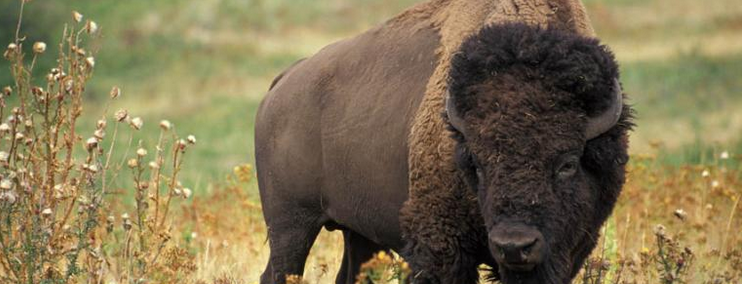
There was once a source of agricultural fertilizer considered too abundant to ever run out. It lasted all of 20 years.
When America’s first transcontinental tracks divided the country in 1869, the railway spine also served to split the buffalo herd in half. Just two years later, Josiah Mooar, a Great Plains buffalo hunter, filled an order of 500 hides for a British tannery. He shipped 57 surplus hides to his brother (John Mooar) in New York City. Wild West(pdf) describes what happened next: “… advance word of the novel cargo reached New York, and John was beset by curious onlookers — including several fur traders. He sold the hides nearly on the spot and soon sent his brother an order for 2,000 more. The tanners had discovered that buffalo hide made ideal machinery belting, crucial in the midst of a burgeoning industrial age.”
Market demand first devoured buffalo hides and meat — and then bone.
A massive bone harvest was under way. Wagons or handcarts — the bones were hauled to rail lines by the ton, and piled in stacks, “… mounds often 15 feet high and twice as wide, stretching as far as a mile.”
In many areas, farmland literally had to be cleared of buffalo bones. Bones removed from grasslands made for easier plowing, and there was money to be made as the same time. From Steven Rinella, author of American Buffalo: “For many, buffalo bones were the first cash crop to rise up out of their newly acquired dirt.”
From Bloomberg: “… homesteaders gathered the buffalo bones. It was easy work: Children could do it. Carted to town, a ton of bones fetched a few dollars. Sent to rendering plants and furnaces in the big industrial cities, that same ton was worth between $18 and $27. Boiled, charred, crushed or powdered, it was worth as much as $60.”
A mix of U.S. industries was quick to capitalize on the skeletons. From American Buffalo: “Makers of fine bone china began to purchase the best of the bones, those that weren’t too dried or weathered … Other big consumers of quality buffalo bones were the sugar, wine, and vinegar industries; they had been using wood ash to neutralize acids and clarify liquids, but in the early nineteenth century they found that bone ash did a better job of making sugar more shiny and wine less cloudy.”
Bone fertilizer
But the vast majority of buffalo bones were consumed by the fertilizer industry. The bones, high in phosphorous content, were machine ground and sold as bonemeal, which was tilled into poor soils. (It also was sometimes added to cattle feed as a calcium supplement.)
The bone supply grew short by 1890. A bone crisis developed, prices rose, but there were simply no more buffalo bones to pick up. In short time, the fertilizer industry began crushing rock to obtain fertilizer phosphate.
An odd period of agriculture history had passed — a time when farmers harvested buffalo bones; sold the bones to fertilizer companies; and then bought back the bonemeal to till into their cropland.
Rinella’s excellent accountincludes this blunt 1885 advertisement from the Grafton News and Times, emblematic of a forgotten window in agriculture history. It ran on the front page: “Notice to Farmers: I will pay cash for buffalo bones … I want 5,000 tons this month.”